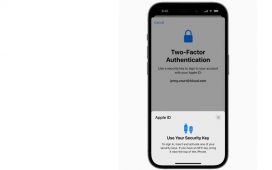LY Corp, a joint venture between Japan’s SoftBank Group and South Korea’s Naver Corporation known for its flagship messaging app LINE, has detailed how it uses an in-house ChatGPT implementation to keep its quality assurance (QA) tasks on track.
A Thursday post revealed that the org has turned to generative AI to help with its QA efforts.
One reason for adopting the tech is that engineers were struggling to extract info from documents and Slack threads.
As explained by SooGwang Chae, a quality engineer at LINE, the QA team struggled to track changes across frequently updated planning documents.
“Previously, QA engineers had to identify key features and compare and organize changes for each update,” he wrote. Now, a Plan Advisor tool uses ChatGPT to summarize docs, details progress in a structured format and “also allows for various forms of summaries through additional conversations.”
Another tool – Thread Summarizer – reads Slack threads and turns them into meeting minutes.
“At LY Corporation, Slack is the primary communication tool, and such discussions usually take place in thread form,” Chae wrote, adding that QA engineers spend “a lot of time” trying to understand the content of threads once planning and development discussions end.
If QA engineers had further questions, they could end up participating in or monitoring every thread. Chae wrote “this would consume a lot of QA resources and isn’t realistic.”
And there we were thinking that Slack was the future of collaboration, after Salesforce bought it for $27.7 billion.
It turns out that for LY the future is ChatGPT, which summarizes those threads to produce minutes that record the issue initiator, thread summary title, main discussion points, conclusions, problems, and action items.
ChatGPT is also used to derive new test cases for LY Corp products, and to describe bugs.
Another use case for generative AI sees the Japanese/Korean org analyze reviews of its wares posted to app stores – which means ingesting opinions written in different languages across the many nations where LINE users dwell.
That’s done using a tool called App Reviewer which, Chae wrote, will translate reviews and analyze sentiment country. It also summarizes key issues by country in a tag cloud format.
“You can also distinguish whether the review is about a feature improvement or a feature error and get opinions on which parts to test further from a testing perspective,” he wrote.
Chae’s post concludes that, for LY’s QA team, ChatGPT and generative AI make a positive difference.
“By thoughtfully integrating generative AI into QA tasks, organizations can not only streamline their workflows but also ensure higher quality outcomes,” he explained. “As the technology continues to evolve, the potential applications and benefits will only grow, making it an exciting time for QA professionals to explore and innovate.” ®












